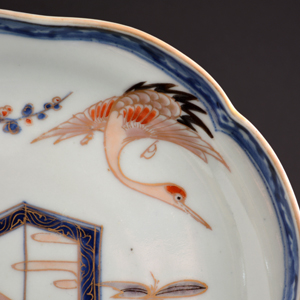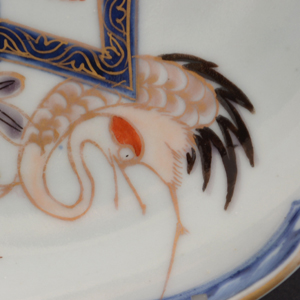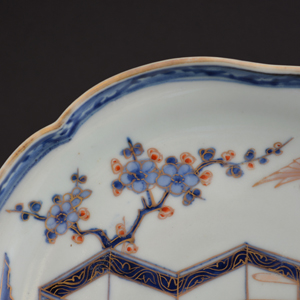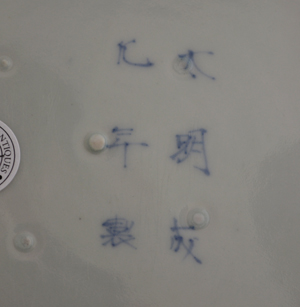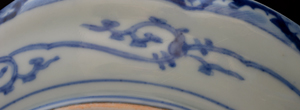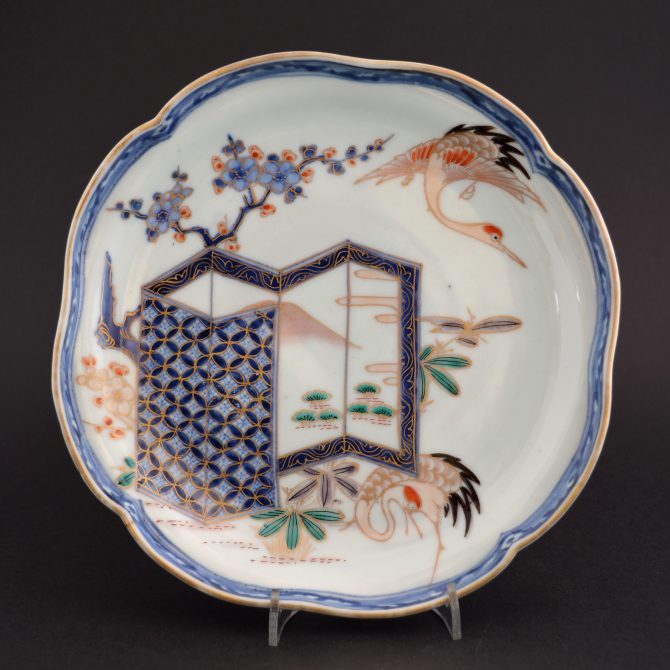
ARITA c.1720 – 1740 Japanese Porcelain
An 18th Century Japanese Porcelain Imari Dish, Arita Kilns c.1720-1740. Decorated in the Imari Palette with a Six Fold Screen with a Mountainous Scene. Bamboo and Prunus Grow Around it and their are Two Red-Crowned Cranes. The Underglaze Blue Border is of Stylised Waves. The Back is Decorated with Karakusa Scrolls and a Further Wave Border. The Base with an Apocryphal Chenghua Mark (Ming 1465 – 1487).
SOLD
- Condition
- In excellent condition, some very minor rubbing to the gilt rim and some scratches to the base.
- Size
- Diameter : 21.5 cm (8 1/4 inches)
- Provenance
- N/A
- Stock number
- 24192
Information
Japanese Imari Porcelain :
Imari Porcelain is the European collectors` name for a type of Japanese Porcelain made in the town of Arita, in the former Hizen Province, north western Kyūshū, and exported via the port of Imari, specifically for the European Export trade. Imari was simply the trans-shipment port for Arita wares, no porcelain was made there. The kilns at Arita formed the heart of the Japanese Porcelain industry, which developed in the early 17th century. Although Imari originating in Japan the tern is used to describe a whole range of ceramics from all over the world, they are all linked by their bright distinctive palette of blue, red and gold. The cobalt that created the blue was added prior to glazing, while the iron-oxide red and the gilding were applied after glazing.
Red-Crowned Crane :
The Red-crowned Crane, Grus Japonensis, also called the Japanese Crane or Manchurian Crane, is a large crane and is now the second rarest crane in the world. The estimated population of the species is only 1,500 in the wild. Red-crowned Cranes breed in large wetlands in temperate East Asia and winter along rivers and in coastal and freshwater marshes in Japan, China, and the Korean Peninsula. In Japan, this crane is known as the Tancho.
